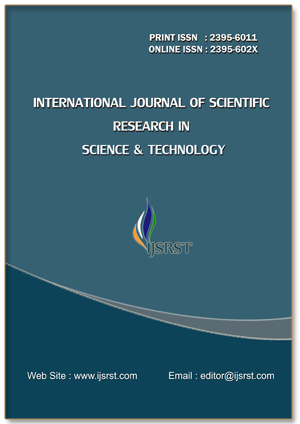Study of Fuzzy Boundary on the Basis of Reference Function
DOI:
https://doi.org/10.32628/IJSRST25123107Keywords:
Fuzzy Boundary, Reference Function, TopologyAbstract
In this present paper, we studied about fuzzy boundary on the basis of reference function
📊 Article Downloads
References
Atanassov, K. T. and Stoeva, S. “Intuitionistic fuzzy sets”, in proc. of Poznan, 1983.
Biswas, R. “Intuitionistic fuzzy subrings”, Mathematical Forum, pp.37-46, 1989.
Das, N. R. and Das, P. “Neighborhood systems in fuzzy topological group”, Fuzzy Sets and Systems, Vol. 116, No. 3, pp. 401-408, 2000.
De, S. K., Biswas, R. and Roy, A. R. “Some operations on intuitionistic fuzzy sets”, Fuzzy Sets and Systems, Vol. 114, No. 3, pp. 477-484,2000.
Alfred Muller., “Stochastic ordering of multivariate normal distributions”, Ann. Inst. Statist. Math., 53(3), PP: 567 – 575, (2001).
Ana Colubi, Renato Coppi, Pierpaolo Durso and Maria Angeles Gil., “Statistics with fuzzy random variables”, International journal of Statistics, LXV(3), PP: 277 - 303, (2007).
Ana Colubi, Santos Dominguez – Menchero, J. Miguel Lopez Diaz and Relescu. D.A., “On the formalization of fuzzy random variables”, Inform. Sci., 133, PP: 3 – 6, (2001).
Arnold F.Shapiro, “Fuzzy random variables”, Insurance: Mathematics and Economics, 44(2), PP: 307 – 314, (2009).
Arnold F. Shapiro., “Implementing Fuzzy Random Variables -- Some
Preliminary Observations”, ARCH 2013.1 Proceedings, Society of Actuaries,PP: 1 – 15, (2012).
Asok K. Nanda and Moshe shaked., “The hazard rate and the reversed hazard rate orders with applications to order statistics”, Ann. Inst. Statist. Math., 53(4), 183 PP: 853 – 864, (2001).
Aurelia Florea, Eugen Paltanea and Dumitru Bala., “Convex ordering Properties and Applications”, Journal of Mathematical Inequalities, 9(4), PP: 1245 – 1257, (2015).
Block. H.W, Savits. T.H and Singh. H., “The reversed hazard rate function”, Probability in Engineering and Informational Science, 12(1), PP: 69 – 90, (1998).
Bo – Yan Xi and Feng Qi., “Some integral inequalities of Hermite – Hadamard type for convex functions with applications to means”, Journal of function spaces and applications, 2012, PP: 1 – 14, (2012).
Capocelli. R. M and De Luca. A., “Fuzzy Sets and Decision Theory”, Information and Control., 23, PP: 446-473, (1973).
Chanas S. and Florkiewicz B., “Deriving Expected values from probabilities of fuzzy subsets”, European Journal of Operations Research, 50, PP: 199– 210, (1991).
Cheng. C.H., “A new approach for ranking fuzzy numbers by distance method”, Fuzzy Sets and Systems, 95, PP: 307 – 317, (1998).
Couso I. and Sanchez. L., “Upper and lower probabilities induced by a fuzzy random variable”, Fuzzy Sets and Systems, 165, PP: 1 – 23, (2011).
Erich Peter Klement., “Fuzzy [17] Ezzati. R, Allahviranloo. T, Khezerloo. S and Khezerloo. M, “An approach for ranking of fuzzy numbers”, Expert systems with applications, 39, PP: 690 – 695, (2012).
Felix Belzunce., “An introduction to the theory of stochastic orders”, Boletin de Estadistica e investigacion operativa, 26(1), PP: 4 – 18, (2010).
Féron. R, "Ensembles aleatoires flous", C.R. Acad. Sci. Paris, 282, PP: 903-906, (1976).
Florea. A and Niculescu. C.P, “A Hermite – Hadamard inequality for convex –concave symmetric functions”, Bull. Soc. Sci. Math. Roum. 50, PP: 149 – 156, (2007).
Guixiang Wang Jing Li, “Approximations of fuzzy numbers by step type fuzzy numbers”, Fuzzy sets and systems, 310, PP: 47 – 59, (2017).
Downloads
Published
Issue
Section
License
Copyright (c) 2025 International Journal of Scientific Research in Science and Technology

This work is licensed under a Creative Commons Attribution 4.0 International License.
https://creativecommons.org/licenses/by/4.0




